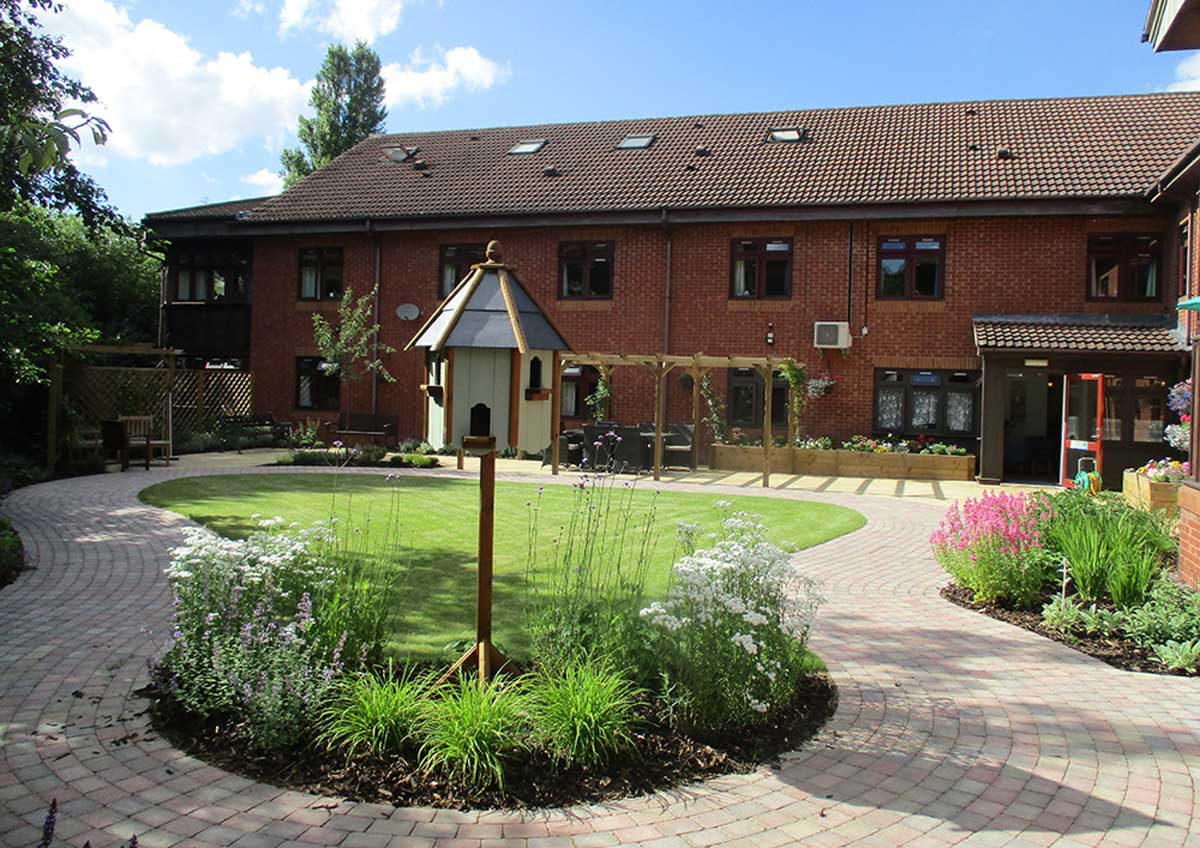This article, by Mark Stefan (CMLI), will briefly outline the principal characteristics of each of the component parts of the Contemplative Landscape Model (CLM) which forms the core of the book Neuroscience for Designing Green Spaces by Angieszka Olszewska-Guizzo, published earlier this year. It will examine the relevance of each element and discuss their application in relation to the design of therapeutic landscapes and external spaces associated with the various types of mental health facilities.
The Network – Journal Of The Design In Mental Health.
This article was originally published in October 2024
View the original article here
The COVID 19 lockdown experience shared by us all highlighted the benefits of an increase level of contact with the natural world, something which was enveloped, at least in the early days, by relative peace and serenity. We all have our own individual preferences in relation to which type of semi-natural and man-made landscapes we find appealing, based on cultural exposure and personal predilections. However, landscape architect and neuroscience researcher Angieszka Olszewska-Guizzo has undertaken in her book to identify the principal elements of a contemplative landscape, to provide fellow professionals with the tools they need when seeking to maximise the potential mental health benefits of existing and new green spaces. She references the fact that for the vast majority of the last 10,000 years homosapiens have lived in close proximity to nature and so arguably mental health impacts are one of the principal costs of the relatively recent adaptation to the densely populated, sensory overloaded, urbanised environments in which the majority of people now reside. Olszewska-Guizzo quotes a study involving 900,000 participants (who ranged from adolescents to adults) carried out by Engemann et al in 2019 “showed that the relative risk of developing anypsychiatric disorder (borderline type, personality disorder, eating disorders, obsessive compulsive disorder, neurotic and stress related disorder, depressive disorder, bipolar disorder, mood disorder, schizophrenia and substance abuse) was higher among those that grew up further away from green spaces”.
According to research which has been undertaken (Clayton 2012) a person’s environment shapes approximately 10% of their overall health and the benefits of contact with a more naturalised environment has been recognised since the 1960’s. Research undertaken in recent years has recorded increased lower frequency brainwaves (Alpha and Theta) arising from exposure to landscapes which encourage a contemplative state of mind. Olszewska-Guizzo states in her book that “exposure to contemplative landscapes amplifies the mental health benefits of so-called nature exposure”, although it is acknowledged that the level of an individual’s sensitivity to their environment will inevitably vary. The author highlights that “A particularly interesting group for contemplative landscape is adolescents”. In research undertaken by Orejudo et al (2022) those who scored highly for statements like “Every now and then I like to admire landscapes” had better self-control, life satisfaction and family activity. The brain science behind this effect is something discussed extensively in Chapter 2 of Neuroscience for Designing Green Spaces.
Contemplative Landscape Model and the underlying research evidence
The CLM, developed by Olszewska-Guizzo consists of seven principal components ranked here in order of importance: Character of Peace & Silence, Layers of the Landscape, Archetypal Elements, Biodiversity,Colour and Light, Landform and Compatibility. This hierarchy of importance is derived from the research conducted by Olszewska-Guizzo et al using electroencephalogram (EEG) data. The length of ‘exposures’ in these experiments were short, comprising of 20-60 seconds in a laboratory setting and between 5 and 7 minutes in an outdoor ‘naturalistic’ environment. Momentary mood improvements were recorded, Olszewska-Guizzo observing that the “participants mood disturbance after the exposure was significantly lower than before; more specifically, the negative emotions of fatigue, depression and confusion were alleviated during the exposure”. In addition, it was found that participants diagnosed with depression benefited more than people in the ‘healthy’ group. Olszewska-Guizzo poses the question about what might constitute the proper dosage for exposure to contemplative landscapes. She signposts some research undertaken by Meredith et al (2020), that confirms as little as 10-20 minutes of time spent in nature “on passive recreation (sitting or walking) can already improve key psychological and physiological markers” and that carried out by Barton and Pretty (2010) which suggest that “the effects can be maintained for two to four hours” afterwards.
Olszewska-Guizzo remarks that research results have confirmed “that not all green space will have the same effect on health” thus suggesting that architects and landscape architects can influence the extent of the resulting health and well-being effects through the decisions they make during the design development process. It is especially useful that the CLM can be used to assess both existing landscapes and proposed schemes, from photographs / plans, visualisation. videos, augmented reality or actual direct ‘real-world’ experience, using the scoring criteria outlined in Chapter 12 of the book. Consequently, it can be deployed to evaluate the potential cognitive benefits of both proposed and completed mental health facilities, in relation to both the associated external spaces and the immediate landscape setting.

The provision of places for rest and relaxation, incorporating comfortable seats and benches which invite the user to linger (as shown here at Colwyn Bay), is an important element of providing a calm and relaxing environment, reflecting ‘peace and silence’.
Contemplative landscape components
The figures in brackets below (combined mood and brain activity scores) are the recorded extent to which each component is deemed to contribute to positive neuropsychological outcomes for users of external green spaces.
As highlighted by Olszewska-Guizzo, water can elicit a strong emotional response capable of “significantly raising the preference of a given landscape view”. She emphasises that in addition to its numerous aesthetic qualities there is also a “deep connection to human evolution” associated with its life-giving properties and religious associations. Although it is acknowledged that there are obvious safety concerns and some ongoing maintenance issues associated with the introduction of water into many mental health settings it can be included as a ‘contemplative’ focal point in many reception / courtyard spaces in a low-risk manner and in other instances a site layout may seek to maximise views of water bodies located outside a site’s boundaries.
In her book Olszewska-Guizzo makes reference to the older trees often being regarded as “a symbol of life and immortality” as well as well as representing concepts such as physical growth and “psychological maturation”. Consequently, this evidence of their contemplative benefits adds further weight to the already widely acknowledged importance of retaining existing visually significant trees at a developments site planning stage and of Landscape Architects ensuring there is enough space provided for any proposed trees to grow to their full size.
Large stones have long been assigned with religious and spiritual significance by different cultures, with an obvious everyday example being the inscribed stone slabs in a churchyard or cemetery. In a healthcare setting boulders can often be modified to double up as a focal water feature.
Neuroscience for Designing Green Spaces confirms that the archetypal ‘mountain’ can be represented in a landscape design context by a mound which beside its heroic connotations can both act as an visually intermediate focal point and serve to direct a viewer’s attention up to the sky, prompting in some instances the “feeling of moving to a higher spiritual plane”.
The final archetypal element, widely deployed by Landscape Architects, is the Circle, representing “wholeness and unity” as well as being a symbol in some cultures of “renewal and rebirth” This can drive the form of spaces as well as the design of other elements such as archways.

The Waters Edge Residential Home in Great Wryley near Warsall. Angieszka Olszewska-Guizzo says water ‘can elicit a strong emotional response capable of significantly raising the preference of a given landscape view’.
Concluding comments
Traditionally, the layout of external areas associated with healthcare facilities has often been dominated by straight lines and geometry. However, the evidence presented in Neuroscience for Designing Green Spaces suggests that the introduction of more asymmetry, flowing lines and carefully managed naturalistic planting could yield significant mental health benefits for both patients and staff, although the exact extent of these will obviously vary depending on both the individuals concerns and the treatment context. Although many of the topics covered in Neuroscience for Designing Green Spaces are routinely taken into account during the design development process, undertaken by architects and landscape architects, the potential contemplative benefits of using specific features to direct the views attention towards the sky may be less widely appreciated.
In conclusion, it is considered that the Contemplative Landscape Model (CLM) is a useful frame of reference for practitioners, architects and Landscape architects involved in the design and development of external space associated with various different types, mental health facilities. However, it is acknowledged that in some instances there will be safety and patient related concerns that pre-empt, the inclusion of some elements that may, otherwise, be desirable for a contemplative landscape. The assigned ranking of each component, is a valuable feature of CLM, enabling priorities to be established in the face of any spatial, budgetary or other constraints.
We would love to see how we can add value to your project.
Please e-mail or call us on 01952 551307